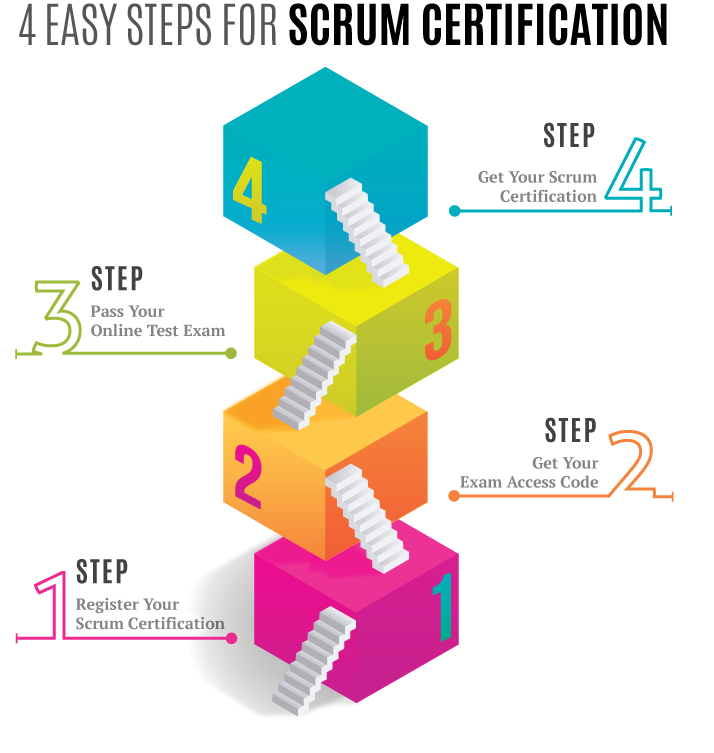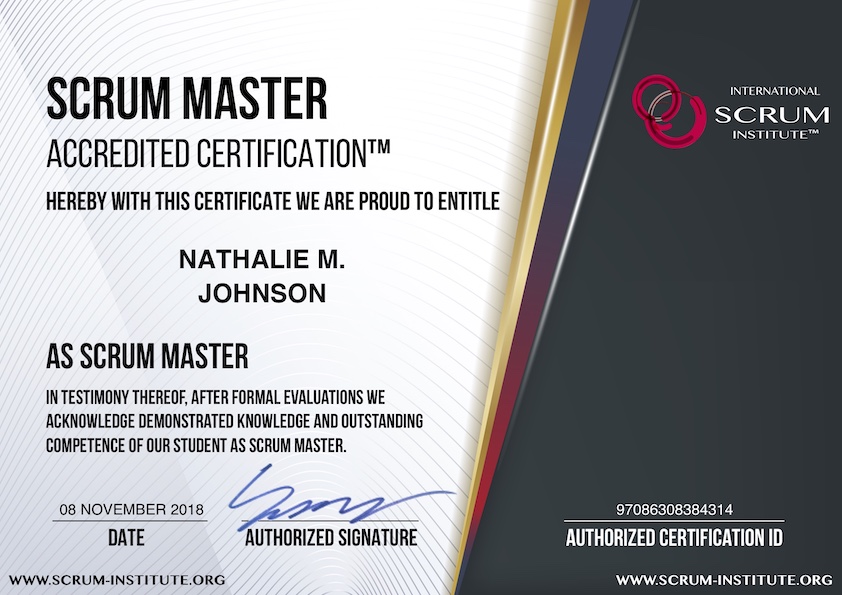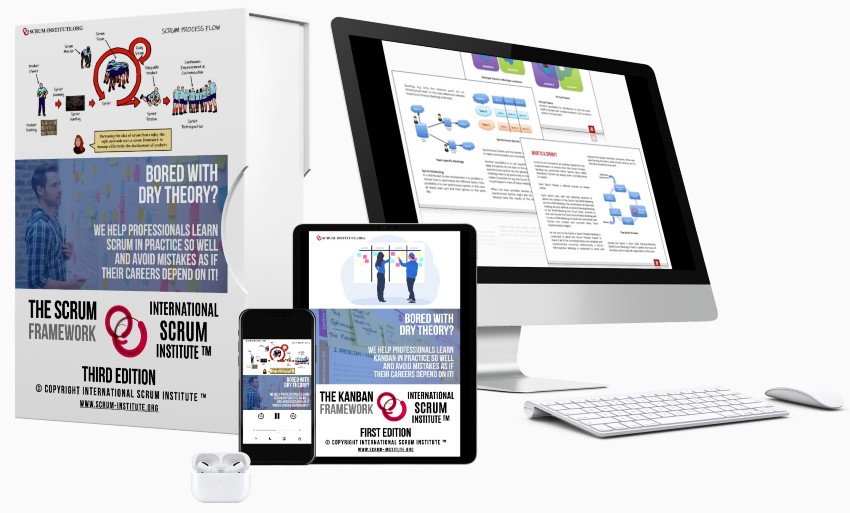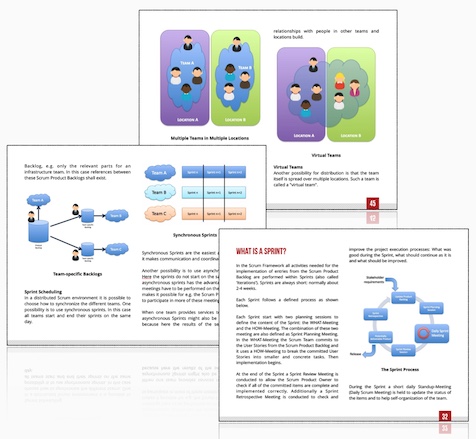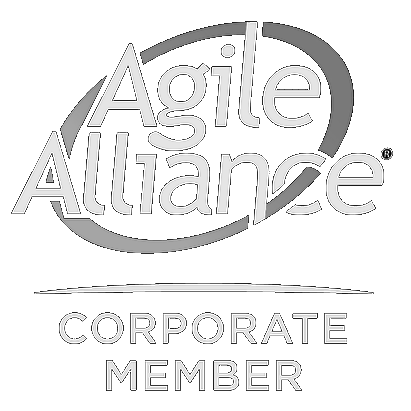Scrum Product Owner: The Ultimate Guide for the Product Owner Role
A Scrum Product Owner is like the captain of a ship navigating the vast ocean of product development. They set the direction and decide which stops to make along the way, always striving to deliver the most benefit to both the business and its customers. However, just as a captain faces potential storms at sea, a Scrum Product Owner also meets challenges that require expert management skills. These could include balancing competing interests or ensuring clear communication among all parties. Guiding us into these turbulent waters, let us explore further.
Scrum Product Owner Definition: The Scrum Product Owner is a crucial role in the Scrum framework responsible for defining and prioritizing the product backlog, ensuring that the development team delivers maximum value to the stakeholders. Acting as the liaison between the business and development teams, the Product Owner plays a pivotal role in guiding the project's direction and ensuring the delivery of a successful product.
As a Scrum Product Owner, your main responsibilities include maximizing the value of the product, managing the product backlog, and providing clarity to the team about the product's vision and goal. Additionally, effective stakeholder communication, prioritizing user stories, and ensuring transparency of decisions through sprint reviews are vital aspects of your role. Remember, being transparent with your decisions will earn you the respect and support you need within the organization.
 Scrum Product Owner With The Scrum Team
Scrum Product Owner With The Scrum Team
The Scrum Product Owner Role
The Scrum Product Owner serves as the conductor of an orchestra, ensuring that every instrument plays its part in harmony to produce a beautiful symphony. In this case, the symphony is your product, and success means achieving remarkable value for your business and customers.
The core responsibility of a Scrum Product Owner is to represent the voice of the customer and stakeholders. This involves much more than just taking orders; it's about understanding the needs, desires, and goals of all those involved and translating them into a vision for the product. It's about leading with clarity and ensuring that everyone involved—whether they are on the development team or not—understands this vision.
To do this effectively, a Product Owner needs to wear multiple hats - They have to be a visionary who can look into the future and predict what the market will demand next. They also have to be a diplomat, able to negotiate between different stakeholders' priorities, and even be a futurist, predicting how technology and trends might impact their product. All these aspects come together to shape the product vision.
Key Aspects of the Product Owner Role
- Defining Product Vision: A Product Owner must articulate what success looks like for the product, guiding the development team towards creating something that meets that vision.
- Setting Priorities: With numerous demands coming from various stakeholders, it's essential for a Product Owner to prioritize features and improvements based on their importance and value.
- Ensuring Maximum Value Delivery: The Product Owner must work closely with the development team to ensure that each iteration (or sprint) delivers maximum value to both the business and customers.
Imagine a Product Owner as the captain of a ship navigating through stormy waters; steering through changing tides and leading their crew towards an unseen destination while facing unexpected challenges along the way.
A successful Product Owner relies on ongoing collaboration with stakeholders, users, and development teams throughout the entire product lifecycle. They need strong analytical skills powered by customer empathy—an ability to step into users' shoes and understand their motivations.
And while it may sound like smooth sailing so far, there are often trade-offs to be made between building new features, fixing existing problems, and allocating time for technical debt on which we have to cast light.
Next, let's delve further into some of these essential functions, unpacking deeper insights into how they drive success in Scrum projects.
Responsibilities of a Product Owner
As a Product Owner, you play a vital role in steering the product in the right direction, ensuring it reflects the business and customer priorities while maintaining alignment with the overall vision. This encompasses several key responsibilities contributing to the product's success and the Scrum team's effectiveness.
Developing and Communicating the Product Vision
The product vision serves as the guiding light that influences all decisions made during the development process. It's your responsibility to articulate a clear and compelling vision for the product, align stakeholders around this vision, and provide direction for the development team. Think of it as painting a picture of what the end result should look like – not just for yourself, but for everyone involved in creating and using the product. This involves effective communication skills to ensure that all team members understand what they are working towards. By personally connecting with stakeholders to understand their needs and translating these into an inspirational vision, you can ignite motivation within the team and encourage them to strive for excellence.
Moving on to another essential responsibility of a Product Owner.
Managing the Product Backlog
The Product Backlog is much more than just a list of tasks; it's a dynamic tool that organizes everything that must be done to develop and maintain a product. Your responsibility is to prioritize and maintain this backlog, ensuring that it reflects the latest business and customer priorities while remaining accessible to the entire Scrum team. This means continually refining and reprioritizing items based on new insights and developments, ultimately facilitating efficiency in task execution. In essence, managing the Product Backlog requires you to be proactive in gathering, analyzing, and incorporating feedback from various sources including customers, stakeholders, market trends, and technological advances.
Lastly, let's explore another essential aspect of your role as a Product Owner.
Optimizing Client Value
A critical element of your role as a Product Owner is maximizing the value of both the product and the work carried out by the development team. How do you achieve this? By making well-informed decisions based on thorough understanding and continuous refinement of the product backlog. In other words, you are not just managing tasks, but striving to find ways to deliver maximum value at every stage of development. This requires strategic thinking, effective planning, and constant reassessment to ensure that every effort contributes positively towards delivering value to clients.
For instance, consider how allocating time for backlog grooming sessions becomes an opportunity not only for prioritizing tasks but also for identifying potential improvements or efficiencies that can enhance client value.
By embracing these core responsibilities with foresight and intentionality, you pave the way for successful collaboration within your Scrum team while driving tangible value for your clients and stakeholders.
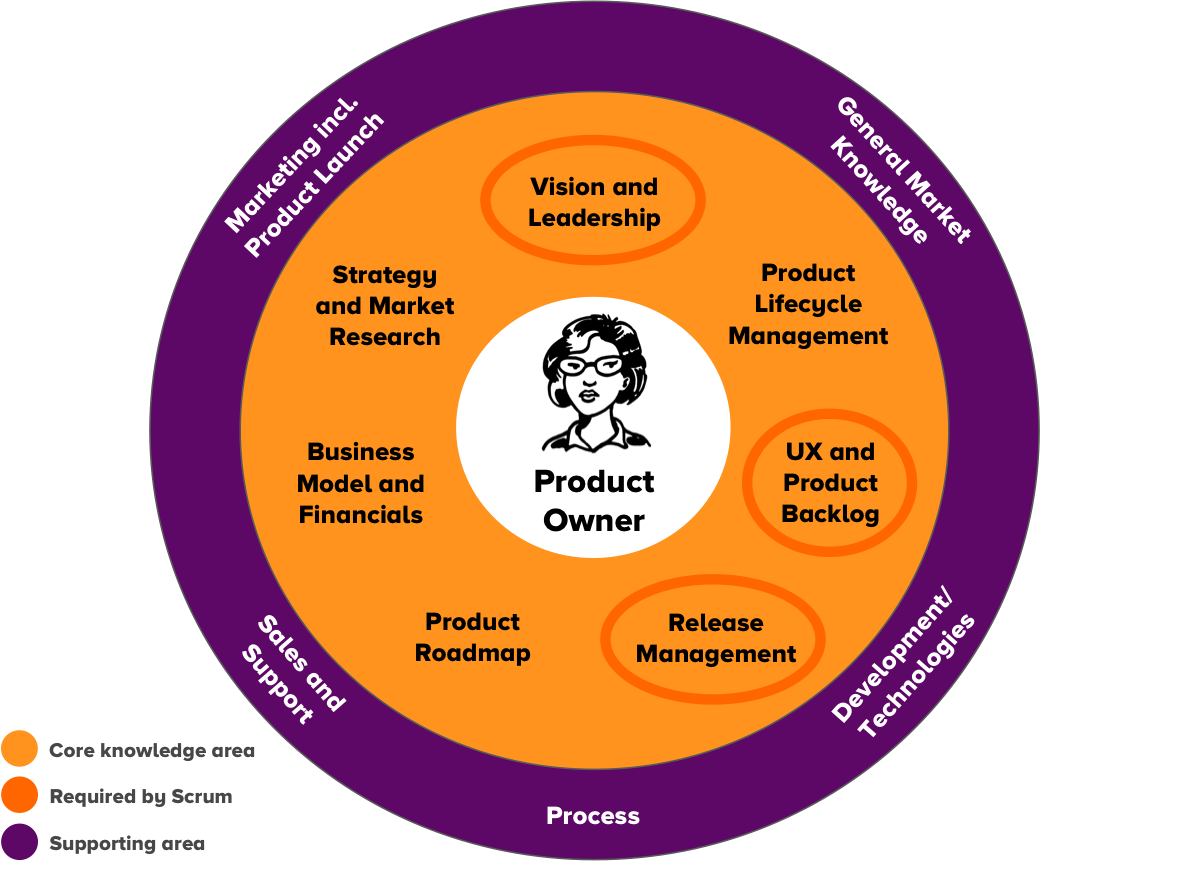 Scrum Product Owner Responsibilities
Scrum Product Owner Responsibilities
Importance of Business Acumen for Product Owners
As a product owner, you are not just responsible for managing the product backlog and conveying the vision to the development team; you also play a prominent role in crafting the product strategy and ensuring that it aligns with the business objectives. This is where business acumen comes into play.
Business acumen for a Product Owner is like having a treasure map. It guides you through the stormy seas of market trends, customer preferences, and industry competition. With a keen understanding of these factors, Product Owners can make informed decisions about what features to prioritize, which markets to target, and how to position the product for success.
Imagine this: A Product Owner with strong business acumen understands the financial implications of every decision made during product development. They know that by prioritizing certain features, they can capitalize on emerging market trends or gain a competitive edge. They can identify potential risks and opportunities to ensure that the product not only meets customer needs but also contributes to the overall business goals.
Moreover, possessing solid business acumen equips Product Owners with the ability to communicate effectively with stakeholders across all levels of the organization. Whether it's presenting the product roadmap to high-level executives or discussing specific features with the development team, a deep understanding of business principles allows Product Owners to convey their vision clearly and persuasively.
Ensuring that the product meets both customer needs and business objectives is a delicate balancing act that requires astute judgment and strategic foresight. Product Owners with strong business acumen are better positioned to navigate this complex terrain, making well-informed decisions that drive value for both the customers and the organization.
It's like being a captain of a ship in uncharted waters - without a keen understanding of navigation and environmental factors, you could easily end up off course or even run aground.
Given this crucial understanding, various learning opportunities exist for Product Owners to enhance their business acumen. Let's explore some valuable resources provided by our website to help Product Owners sharpen this vital skill set.
Interaction and Cooperation with the Development Team
As a Product Owner, your relationship with the development team is crucial to the success of any project. It's more than just leaving them to do their work; it's about valuable collaboration and strong communication. This interaction isn't just about sharing knowledge or updates - it's about creating a truly cohesive unit.
The first cornerstone of this cooperation is a shared understanding. When you participate in ceremonies like sprint planning, daily stand-ups, and sprint reviews, you're not just fulfilling obligations - you're fostering an environment where everyone is on the same page. This goes a long way in preventing misunderstandings and unnecessary rework.
Effective and productive development processes heavily rely on clear, comprehensive communication. By bridging the gap between the business side (represented by you) and the technical side (the development team), you contribute to ensuring that priorities are well-understood and developers have all the necessary information to carry out their tasks effectively.
You're like the conductor of an orchestra. Everyone in the development team has their part to play, but they also need to know how their piece fits into the whole symphony. Your role is to ensure that every note is played at the right time and in harmony with every other instrument.
By participating actively in these ceremonies and fostering open communication, you are essentially nourishing an environment where questions can be asked freely without fear of reprisal and concerns can be addressed promptly without turning into larger issues.
Your transparent involvement in sprint activities helps create an environment where iterative progress is celebrated rather than feared or misunderstood. It encourages learning from each other, promoting adaptability, and offering feedback regularly.
In essence, by building such robust interactions with your development team, you're not only shaping effective products but also nurturing a culture of trust, collaboration, and shared success.
With a strong foundation laid for collaboration within the Scrum team, let's now explore how ensuring client value becomes a paramount focus.
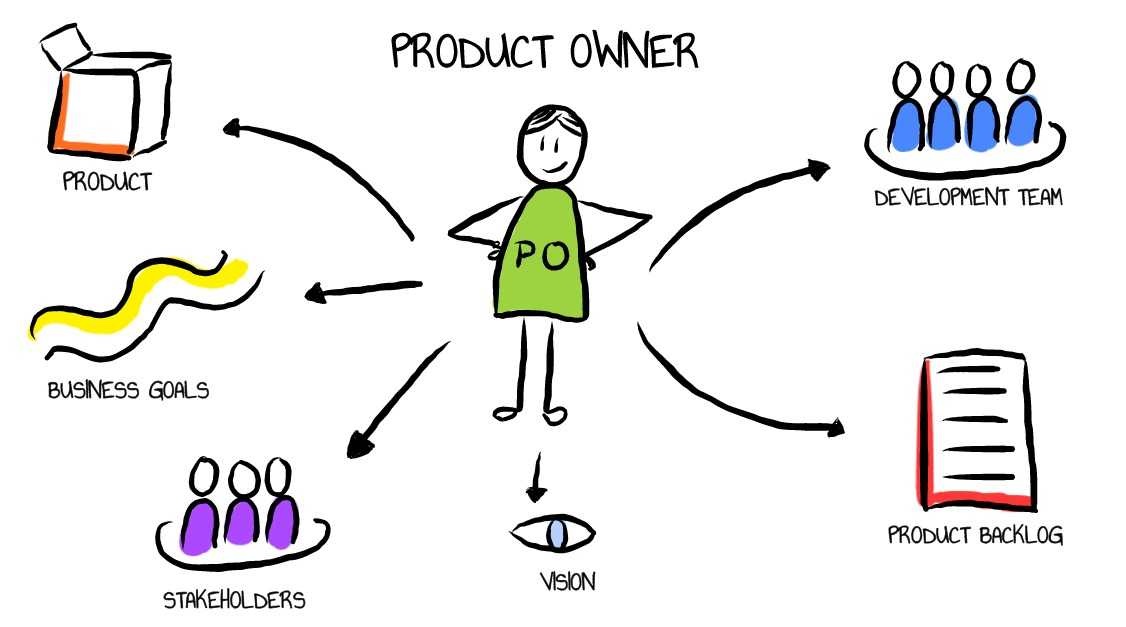 Scrum Product Owner
Scrum Product Owner
Ensuring Client Value
As a Product Owner, the primary focus is to deliver maximum value to the client through the product. This involves actively engaging with the client, understanding their needs, and prioritizing features in a way that aligns with their goals and expectations.
To achieve this, regular interaction with the client becomes essential. By gathering frequent feedback and involving them in key decision-making processes, you develop a deep understanding of their requirements and preferences. In essence, acting as a conduit between the client and the development team enables you to bridge any gaps in understanding and ensure that both parties are aligned towards delivering a product that resonates with the client's vision.
Clients often have evolving needs and preferences, which makes it imperative for Product Owners to be adaptable and responsive. This means being prepared to accommodate new requirements and modify priorities if necessary. Embracing this flexibility not only enriches collaboration but also serves as an effective strategy for maintaining client satisfaction.
When making decisions that impact the product roadmap or feature prioritization, it's crucial to weigh these choices against how they contribute to the overall value for the client. Every decision should be grounded in driving customer satisfaction and loyalty. This might involve saying no to certain requests or advocating for specific features that serve long-term value over short-term gains.
Gathering client feedback isn't just about knowing what they want; it's about understanding why they want it. This deeper insight enables you to anticipate future needs, identify potential pain points before they arise, and proactively steer the product development process towards delivering exceptional value for the client.
For instance, consider a scenario where a client expresses interest in implementing a new feature within a tight timeline. As a Product Owner, you assess not just the immediate benefit of incorporating this feature but also its strategic alignment with the client's long-term objectives. By considering factors such as scalability, market demand, and user impact, you ensure that decisions contribute to sustained value delivery rather than being merely reactionary.
In summary, serving as a champion for client value epitomizes the core essence of the Product Owner role. It necessitates continuous engagement with clients, thoughtful decision-making aligned with customer-centric values, adaptability in response to evolving needs, and an unwavering commitment towards driving customer satisfaction and loyalty - all elements that collectively foster enduring partnerships and successful product outcomes.
The path to success for a Product Owner is strewn with various challenges that require adept navigation. Let's now shift our focus to examining these hurdles and exploring effective strategies to overcome them.
Key Challenges and Ways to Overcome Them
As a Product Owner, you're likely to encounter various obstacles in your quest to maximize the product's value. One common challenge is stakeholder management. This involves navigating the diverse expectations of stakeholders with different priorities and interests, where communication plays a vital role in finding middle ground and aligning everyone towards a unified direction. Transparency remains crucial, ensuring that all stakeholders have a clear vision of the product's roadmap. When stakeholders understand the reasoning behind decisions and can see the value delivered, it becomes easier to earn their support.
Setting clear expectations from the outset is another effective strategy for managing stakeholder relationships. By fostering open dialogue and involving stakeholders in decision-making processes, you build trust and create a sense of ownership in the project. Regularly seeking feedback and providing updates on progress fosters a culture of collaboration, making it easier to address any concerns before they escalate into major issues.
For example, imagine you have multiple stakeholders with conflicting demands for new features. Through active engagement, you can conduct regular workshops to gather stakeholder feedback, align on strategic objectives, and collectively prioritize features based on customer needs and market trends.
Balancing Priorities
Another significant challenge faced by Product Owners is balancing priorities when it comes to feature prioritization and product backlog management. Striking the right balance between addressing immediate needs and pursuing long-term goals can be daunting.
One effective technique to tackle this challenge is value-based prioritization. By aligning feature priority with the overall value it brings to users and the business, Product Owners can make informed decisions that contribute to achieving strategic objectives. It's crucial to continuously evaluate the impact of features on customer satisfaction, revenue generation, and market competitiveness.
For example, imagine you have limited development resources but multiple features to consider. Using value-based prioritization, you can identify high-impact features that deliver substantial benefits to customers or provide a competitive edge in the market, thus ensuring that efforts are channeled into initiatives that yield the most significant returns.
Overcoming these challenges requires perseverance and dedication, but by implementing strategic communication approaches, seeking consensus among stakeholders, embracing transparency, and leveraging value-based prioritization techniques, Product Owners can effectively navigate these hurdles and steer their products towards success.
In this high-stakes game of navigating complex stakeholder dynamics and balancing competing priorities, Product Owners must harness strategic communication combined with transparent decision-making processes to guide their products towards triumph. Always remember that each obstacle presents an opportunity for growth and refinement. Good luck!
Questions and Answers for Scrum Product Owners
Who is allowed to tell the team to work from a different set of requirements than the product owner has laid out?
Answer: The Scrum Product Owner has the authority to instruct the team on alternate requirements, as defined within the product owner responsibilities. However, in certain cases, an expert within the company, such as partners or others with specialized knowledge or services, may advise the team to work from a different set of content. It is crucial for effective collaboration that any divergence in requirements is communicated and coordinated with the Scrum Master to ensure alignment with the overall goals of the company.
What is the role of Scrum Product Owner?
Answer: The role of Scrum Product Owner is pivotal in the Scrum framework, as they are the experts responsible for defining and prioritizing the product backlog based on the business strategy. Their accountabilities encompass collaborating with cross-functional teams, engaging with stakeholders, and ensuring that the delivered increments align with the evolving needs of the people involved in the project. By strategically managing the product backlog, Product Owners play a crucial role in achieving project success and satisfying both business and end-user requirements.
Who is the Product Owner in Agile?
Answer: The Product Owner in Agile is a key figure responsible for guiding the development team and prioritizing features based on business value. Their expertise is honed through product owner training, where trainers impart essential knowledge about the roles and responsibilities associated with the position. In these classes, the Product Owner learns to effectively fulfill their role, acting as a coach within the team and orchestrating the agile development process.
Is Scrum Product Owner worth it?
Answer: The Scrum Product Owner role is worth it as it embodies essential product management skills, enabling effective prioritization and delivery within the Scrum framework. With dedicated leadership support, the Product Owner becomes a pivotal bridge between stakeholders and the development team, ensuring the successful execution of product goals and maximizing value. The combination of product management skills and unwavering leadership support makes the Scrum Product Owner role a valuable asset in achieving agility and meeting customer needs in today's dynamic business landscape.
What Scrum Product Owner Certification should I get?
Answer: To become a proficient Scrum Product Owner, aspiring individuals should pursue the Scrum Product Owner Accredited Certification offered by the International Scrum Institute. This certification ensures a comprehensive understanding of the key principles and practices through engaging courses led by experienced trainers. By following the prescribed steps in the accredited class, candidates can acquire the essential skills and knowledge needed to excel in their role, making it a valuable investment in their professional development.
Takeaways: Unlocking the Power of Scrum Product Owner
In the dynamic realm of agile methodologies, the Scrum Product Owner stands as a linchpin in steering the ship of software development towards success. Let's delve into the key takeaways from the comprehensive overview of the Scrum Product Owner role, exploring their mission, responsibilities, and the broader impact they wield within organizations.
- Agile Mastery: Embrace the essence of agility by understanding and implementing the agile framework, fostering flexibility and adaptability in response to changing situations.
- Scrum Framework Expertise: A Scrum Product Owner must be well-versed in the intricacies of the Scrum framework, ensuring a deep understanding of its events, practices, and overall approach to product development.
- Product Management Leadership: Assume a leadership role in product management, aligning the product vision with organizational goals and leveraging expert facilitation to guide Scrum teams effectively.
- Accountability at the Core: The Product Owner bears the mantle of accountability, taking ownership of product success, making critical decisions, and leading the team towards delivering exceptional value.
- Continuous Learning: Stay on the cutting edge through continuous learning, exploring articles, engaging with the Scrum community, and seeking certifications to enhance expertise and capabilities.
- Collaborative Partnerships: Forge strong partnerships with Scrum Masters, recognizing their role in facilitating Scrum events and enhancing collaboration within the Scrum team.
- User-Centric Approach: Prioritize user experience by understanding user needs, eliciting feedback, and translating it into valuable product features, ensuring customer satisfaction and loyalty.
- Career Advancement: Elevate careers by investing in product owner certifications and training, becoming a certified Scrum professional and unlocking new opportunities in the agile landscape.
- Kanban Integration: Embrace the versatility of Kanban, integrating its practices where appropriate to enhance workflow efficiency and optimize the delivery pipeline.
- Community Engagement: Actively participate in the Scrum community, sharing insights, contributing to discussions, and leveraging collective wisdom to overcome challenges and drive continuous improvement.
- Impact on Software Development: Recognize the pivotal role in the software development life cycle, contributing to a collaborative and efficient environment that accelerates product delivery.
- Measure and Improve: Implement metrics to measure product success, team performance, and overall agility, utilizing data-driven insights to identify areas for improvement.
In conclusion, the Scrum Product Owner, with a potent mix of skills, certifications, and a relentless commitment to agility, becomes a catalyst for organizational success. By embracing their multifaceted role and staying attuned to industry best practices, these professionals navigate complex landscapes, propelling both their careers and the products they champion to new heights.
Share It With Your Colleagues and Friends to Help Them Learn:
Scrum Product Owner: Best Guide for Product Owner Role
|
|

|

|

|

|
|
 SCRUM INSTITUTE™
SCRUM INSTITUTE™



